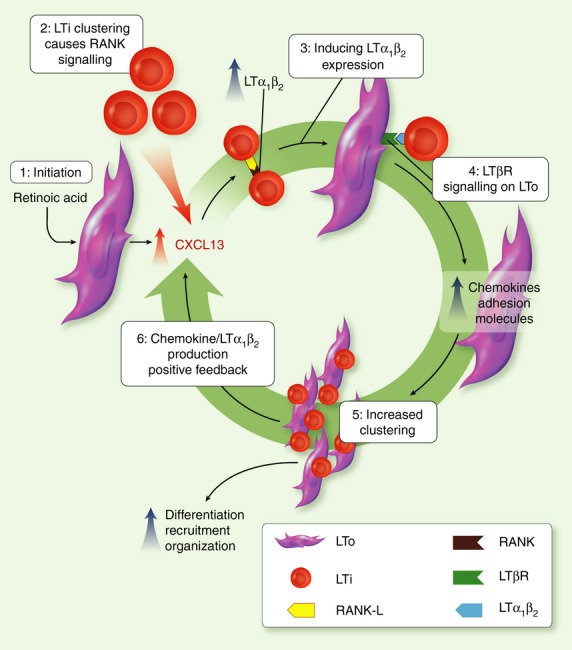Figure 1.

Sequential stromal cell–haematopoietic cell interactions govern secondary lymphoid organ (SLO) development (adapted from ref. 2). Lymph node (LN) development is initiated by retinoic acid acting on a population of stromal cells(s) that induces CXCL13 expression at predetermined anatomical sites (1). CXCR5+ lymphoid tissue-inducer (LTi) cells migrate on this CXCL13 gradient and cluster, with subsequent receptor activator of nuclear factor-κB (RANK)/ RANK ligand (RANKL) signalling inducing expression of lymphotoxin (LT) by LTIs (2 + 3). The LT signals through the LTβ receptor on stromal cells causing them to differentiate into lymphoid tissue organizers (LTos) (4). This activation drives the expression of chemokines and adhesion molecules that lead to the further attraction, clustering and local retention of LTis (and other lymphocytes: 5), production of more LT and the generation of a positive feedback loop that increases clustering and facilitates LN expansion (6).
